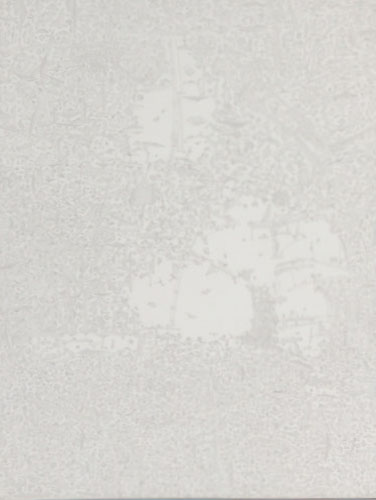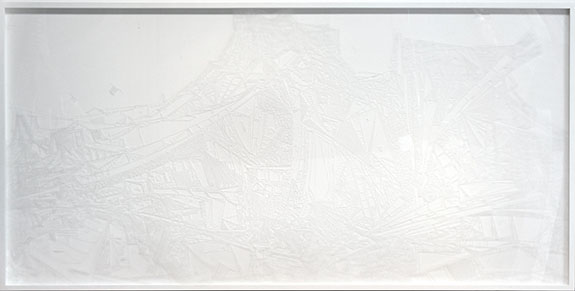 |
 |
There’s a delicious irony in finding barely readable drawings in a room whose sheer scale often holds out the promise of something lapel-grabbing. Credit the “code switch,” if you will, to the Uruguayan artist Marco Maggi. In West vs. East, a title suggestive of dueling philosophical systems, Maggi, in his sixth show here, defies the expectations raised by the environment in which his work appears.
 |
The two are easily and often confused. Knowledge is what you acquire from experience. It’s something you own. Knowingness is the pretense of ownership. It’s what you get from Twitter or TV news or Facebook. Maggi, who now resides in upstate New York, calls out the difference and questions the ever-increasing conflation of the two. He does it by drawing on unusual substrates (aluminum foil) and by treating conventional media (paper, glass and plexiglas) in novel ways. The results are objects that call into question their own objecthood and force us to ask: What do we know and how we know it?
 |
.jpg) |
consist of excavated reams of paper. They’re hollowed out into grid-like structures that bring to mind any number of well-known Modernist architects whose names he appends to the titles (e.g. Complete Coverage of Rem Koolhaus). Each “window” is filled with the same kind of cutout shapes found in Spelling Square, the effect being mildly voyeuristic. Save the titles, they present no criticism, overt or implied, of either journalism or architecture. Maggi’s strongest suit, it appears, is messing with our perceptual apparatus.